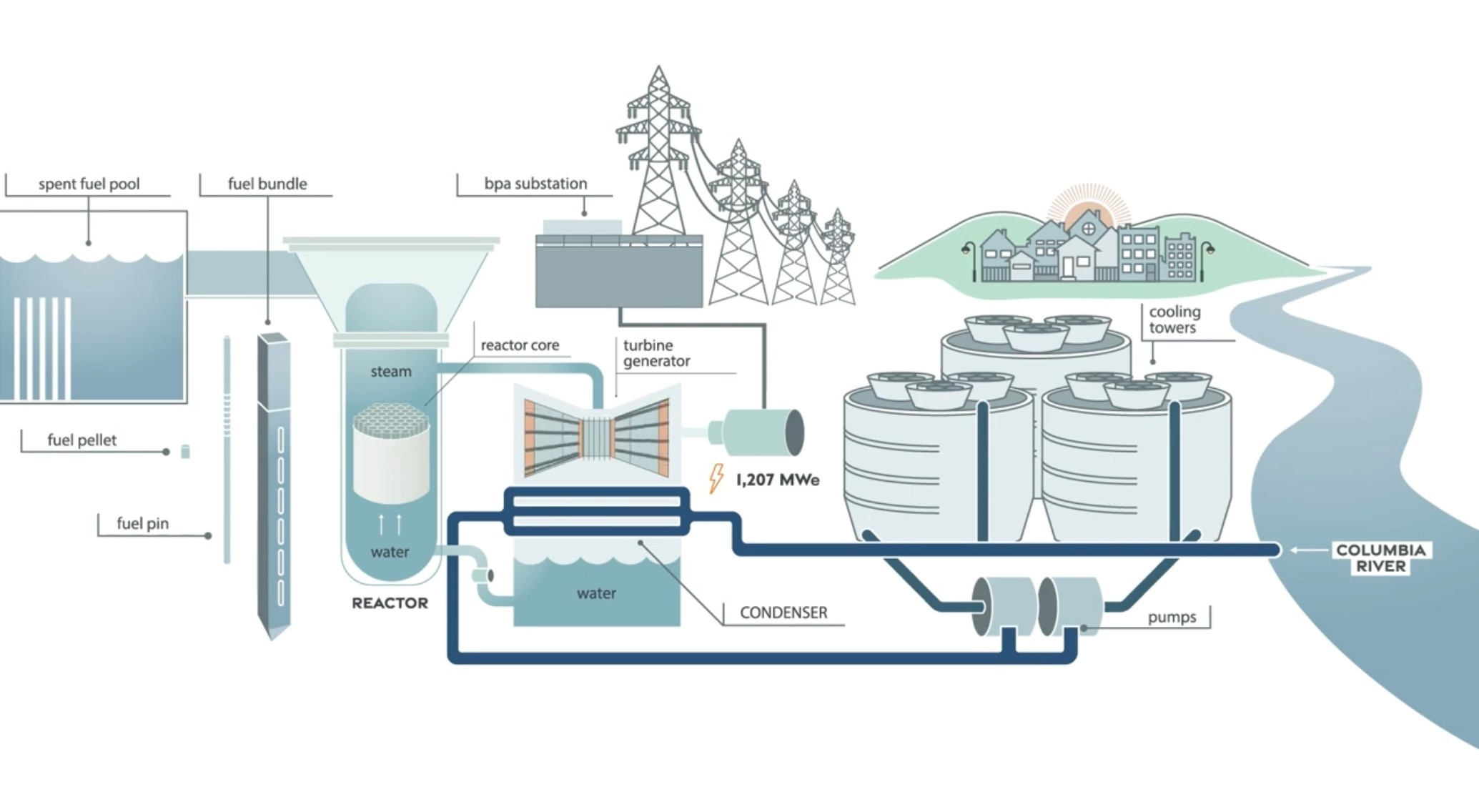Columbia Generating Station makes millions of carbon-free megawatts by boiling water into steam that turns turbine and spins a generator. The nuclear plant uses uranium, a naturally occurring element, as the primary fuel source.
Heat is released when a subatomic particle, called a neutron, strikes (and is absorbed into) the nucleus of a uranium atom causing the nucleus to split. The splitting of the atom, called fission, produces heat and additional neutrons. The additional neutrons then cause other uranium atoms to fission, resulting in a self-sustaining chain reaction.
Each splitting of a uranium atom releases a relatively small amount of heat. Billions of atoms, however, are splitting in the fuel core every second collectively producing the heat necessary to boil the large volume of water in the reactor into high-pressure steam.
The steam is piped to large turbines, where it pushes blades that cause a shaft to spin at high speed (1,800 revolutions per minute). The turbine shaft is connected to the electricity generator, causing it to also spin and produce electricity.
After flowing through the turbines, the steam is cooled in a unit that condenses it back into liquid water.
The water is then pumped back to the reactor to be reheated and turned back into steam, repeating the steam cycle. The heat from the condenser, carried by non-radioactive water, is released into the air in the form of water vapor through six cooling towers located near the plant.
Controlling the amount of heat, or fission, in the reactor at any given time is the reactor operator’s responsibility. Control rods form a barrier between fuel assemblies, and can be moved in and out of the fuel core to prevent or regulate the nuclear chain reaction.
In boiling water reactors, control rods enter the core from the bottom and move upward. To stop the reaction completely, rods are fully inserted upward into the core. This can be done very quickly (within seven seconds). The rods can also be inserted partially to regulate reactor energy levels.
Learn more:
Nuclear energy